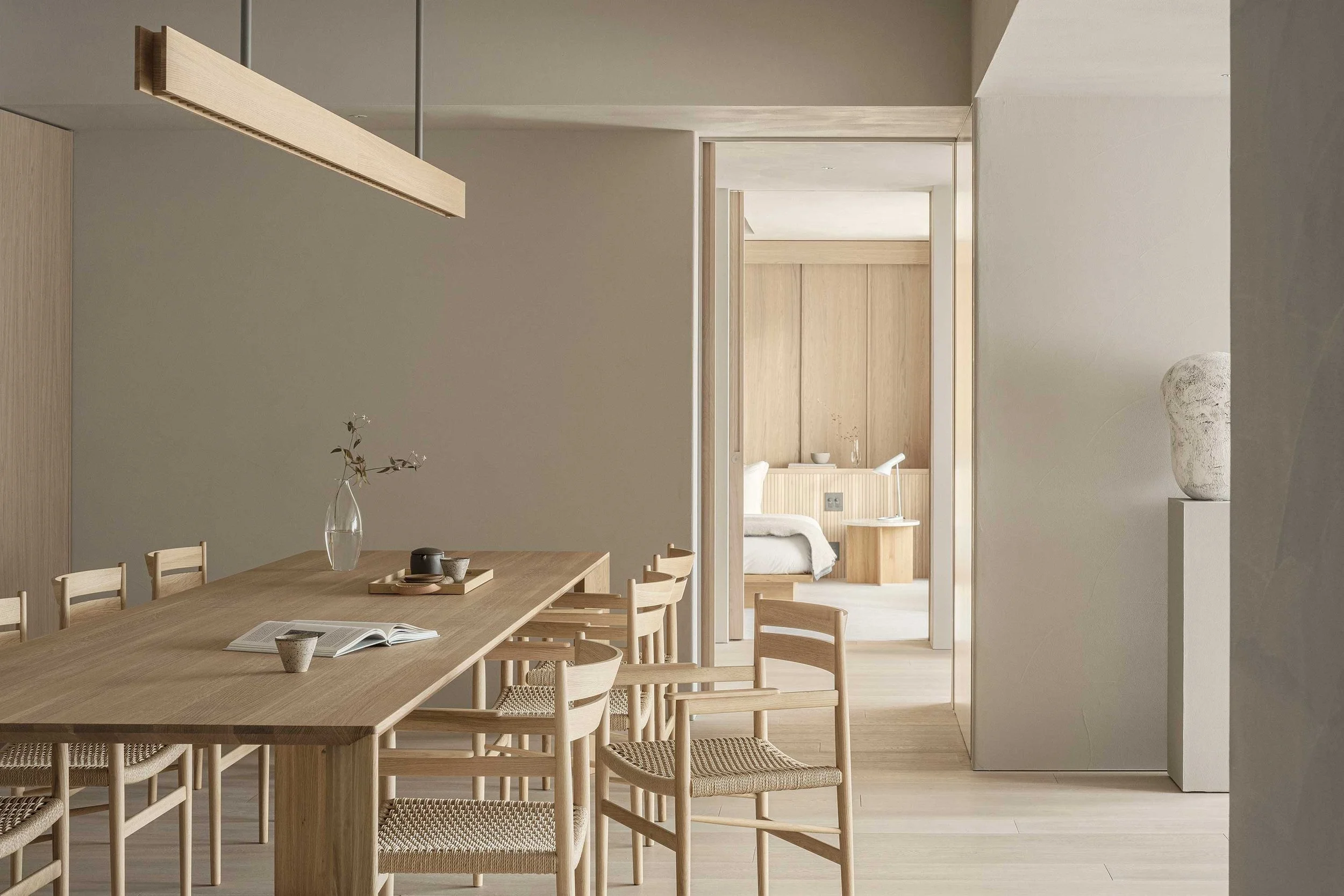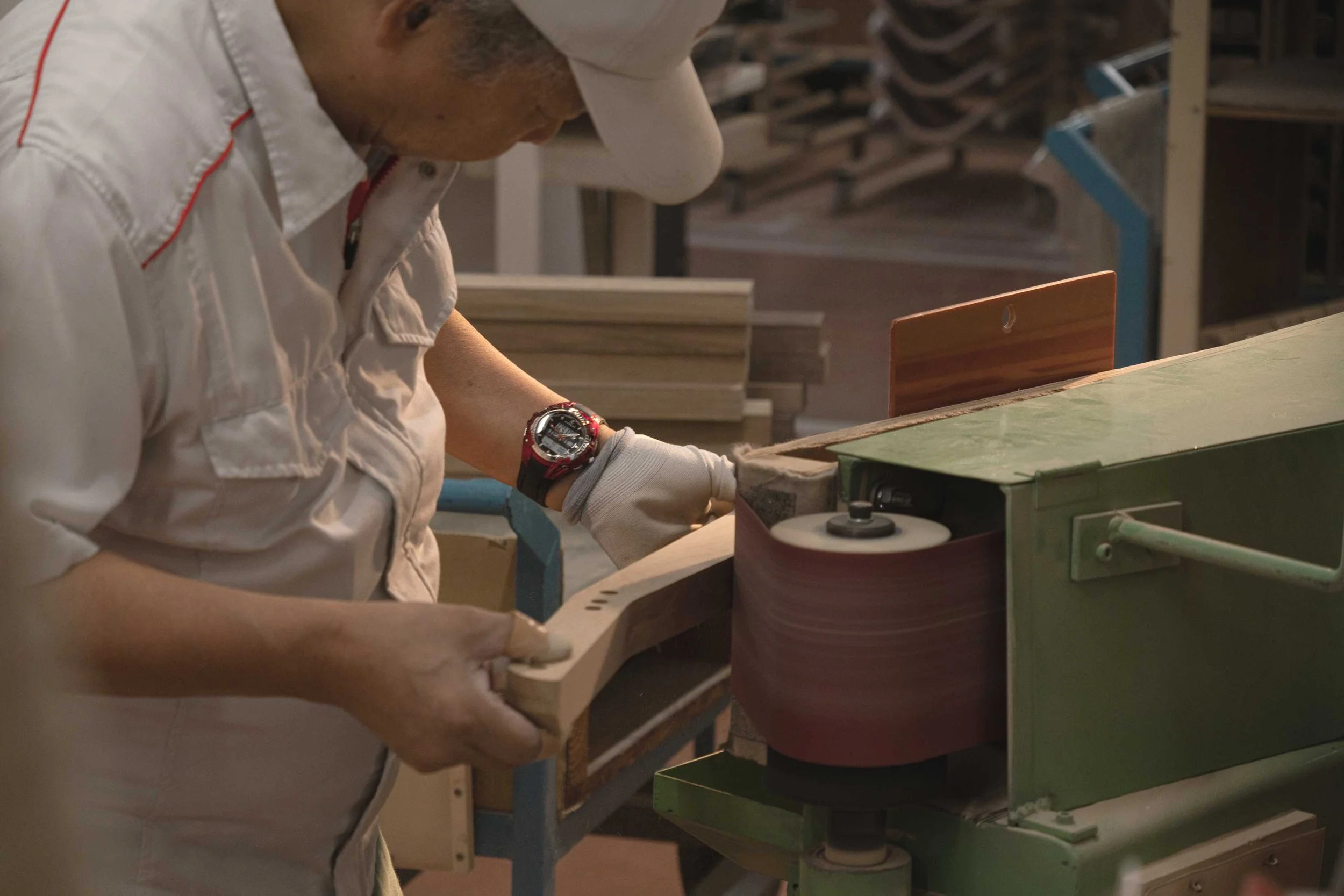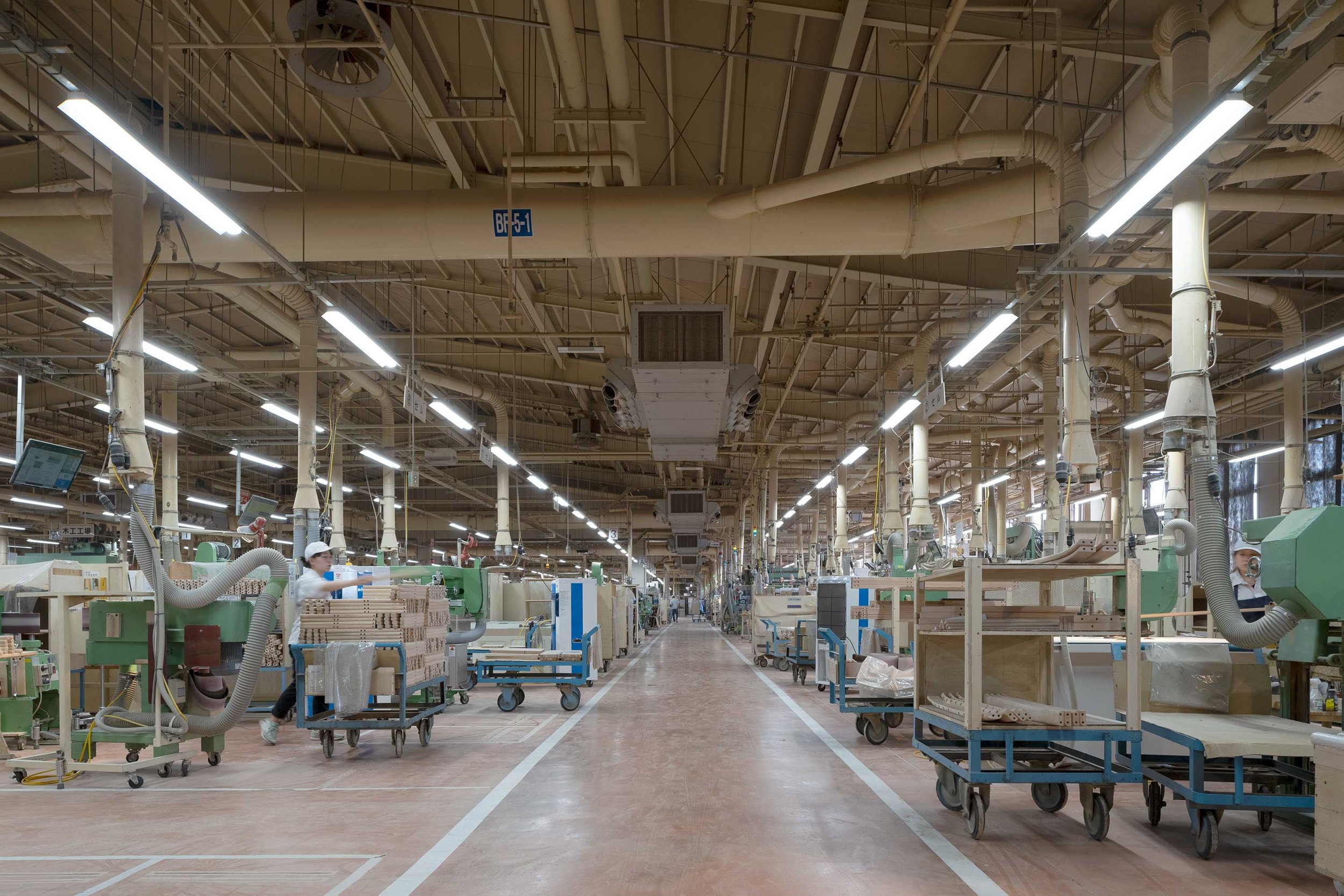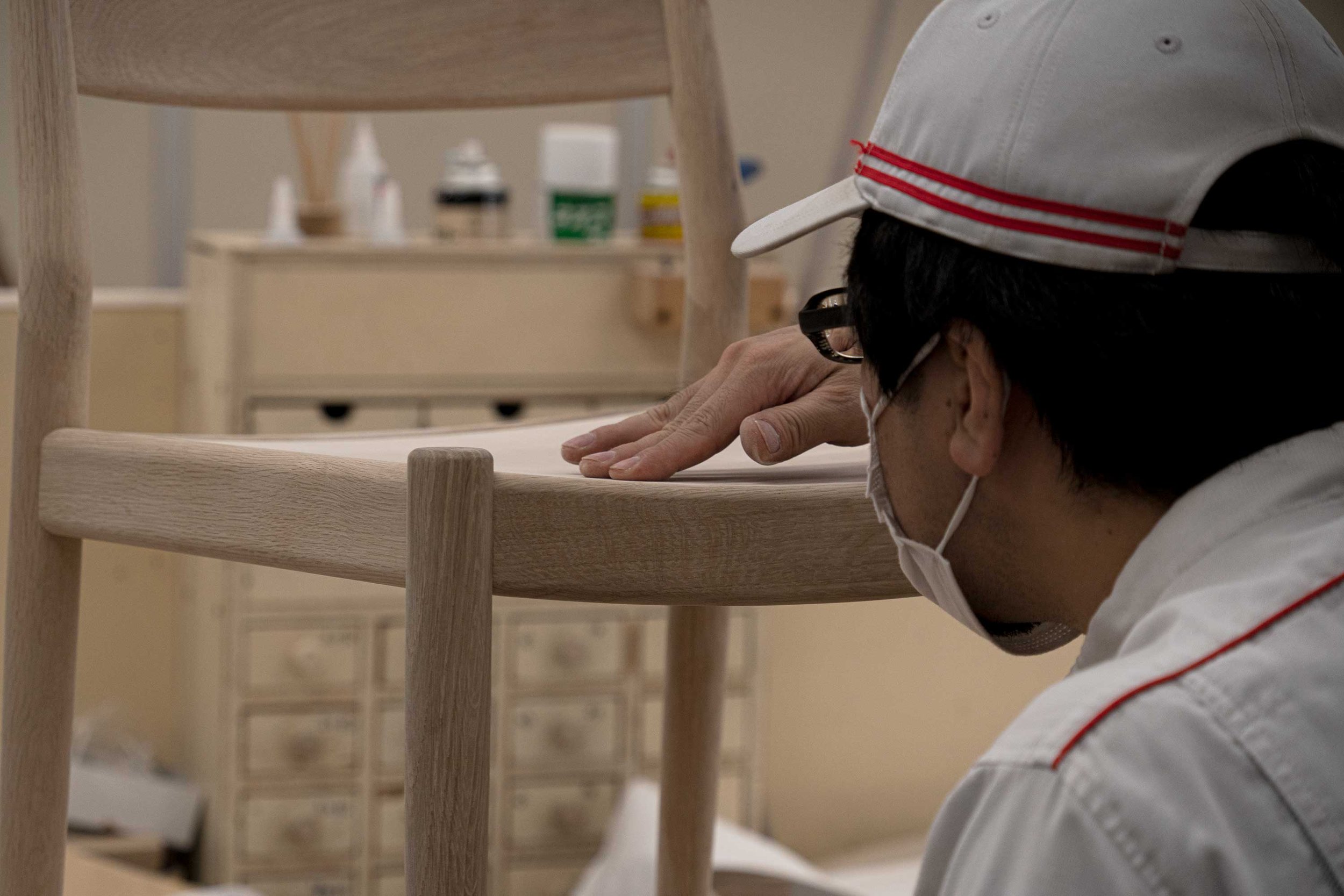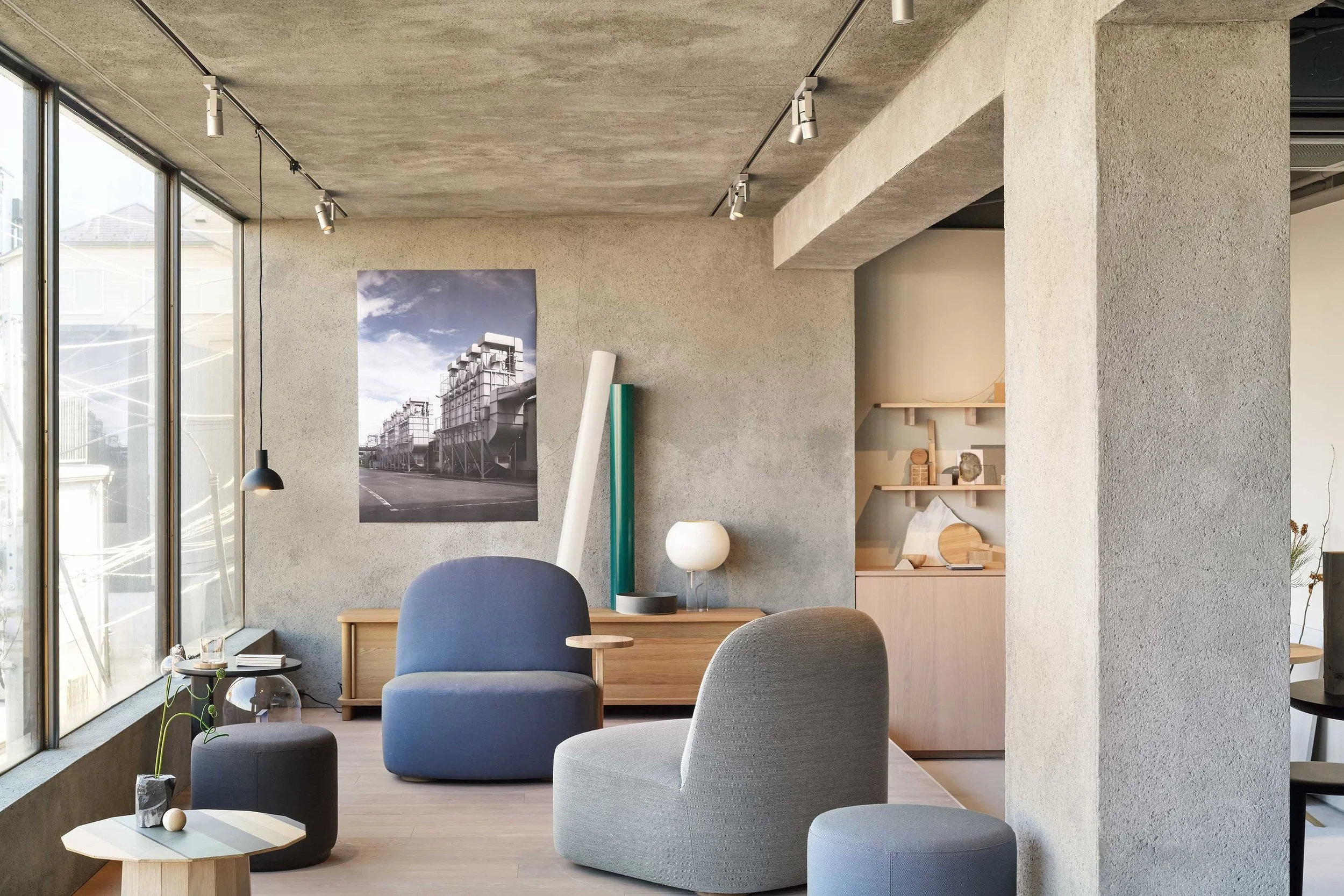The Craft of Karimoku Furniture
With a history dating back to 1940, leading Japanese brand Karimoku Furniture has honed its craft through decades of producing timeless wood pieces imprinted with nature, layered with stories and designed to last for generations
Karimoku Furniture founder Shohei Kato began working with wood in 1940, when he inherited a lumber business and established a woodworking shop in Aichi Prefecture. The company honed its craft through years of producing domestic items such as components for sewing machines and musical instruments and, in the early 1960s, finally began to produce original furniture — the beginnings of the leading Japanese furniture brand we know today.
Karimoku Furniture
A Brief History
The organic curves of a wood grain. A natural warmth to the touch. A human edge to the form. A delicately honed balance between meticulous craft and innovative technology. And a deep respect for the beauty of nature.
These qualities underpin the DNA of Karimoku Furniture. Whether it’s a dining table, a stool or an armchair, the Japanese furniture manufacturer has spent decades fine-tuning the art of marrying the handmade and the machine-made with high-quality timber, resulting in timeless wood pieces imprinted with nature, layered with stories and designed to last for generations.
The company began its journey in 1940, when founder Shohei Kato tapped into his family’s heritage in lumber dealing and opened his own woodworking shop in Kariya, Aichi Prefecture. Smoothly adapting to modern times, the company deepened its wood processing skills through a raft of endeavours — from making spinning machines to support post-war reconstruction industries to producing components for products such as sewing machine tables and pianos.
In the 1960s, as Western culture increasingly left its imprint on Japanese lifestyles, the company began its next chapter: Kato changed the name to Karimoku Furniture (‘Kari’, after its birth town Kariya, and ‘moku’, from mokuzai, meaning wood) and focused on creating its own furniture collections to complement contemporary Japanese lifestyles.
Today, Hiroshi Kato is one of the key figures responsible for running the company, serving as vice president. ‘There is no doubt that excessive consumption and the resulting waste of resources are causing environmental destruction,’ he says. ‘We strive to move away from the old-generation marketing that encourages consumption and instead focus on creating furniture that is loved by people for a long time and enriches their individual lives. In this context, design plays a crucial role.’
The starting point is always the wood. The company uses woods that take between 50 and 100 years to grow, such as oak, chestnut and maple, and the process begins with an understanding of the wood’s origins and respect for the forests. The wood is dried to the company’s standards so that it can be used for Karimoku Furniture, with the predominant timber being oak from Japan.
Another unique quality of Karimoku Furniture’s creations is that they’re all manufactured and crafted in-house at the company’s specialist factories across Japan. This ‘made in Japan’ element is reinforced by rigorously honed specialist craft, with continual in-house research into technological innovations.
Collaboration, connection and pushing creative boundaries are also fundamental to Karimoku Furniture’s 21st-century identity. These values are reflected in four key collections, each distinct in form and aesthetics yet firmly rooted in contemporary design narratives: Karimoku Case, Karimoku New Standard, MAS and Ishinomaki Laboratory by Karimoku.
Karimoku Case
A World of its Own
The N-DC01 | Dining Chair makes a subtle statement with its minimalist oak structure, softly curved, impeccably crafted and timeless in its beauty. It’s the perfect reflection of Karimoku Case, a contemporary lifestyle project that taps into the simple but fundamental idea that furniture should be specifically designed to exist in harmony with its surroundings. What’s more, Karimoku Case’s pieces are designed exclusively by architects specifically for their architectural projects, guided by the idea of ‘furniture conceived in relation to spatial considerations’ and the belief that furniture chosen for an architect-designed space should be as considered as the space itself.
Under the design direction of Copenhagen-based Norm Architects, the brand’s holistic remit involves designing bespoke new furniture pieces for exclusive interior and architectural case study projects, with new collections subsequently released for each space.
CASE 01 was Kinuta Terrace, a residential development in Tokyo. The N-DC01 was one of 12 tailor-made furniture pieces designed for two apartments, evoking a fusion of Japanese and Danish design influences. Since Kinuta Terrace, there have been eight case studies, with projects ranging from homes and cafes to shops, the most recent being Bellustar Tokyo, a Pan Pacific Hotel spanning the top floors of a new Shinjuku skyscraper (CASE 09).
With its expanses of timber textures and clean lines, Hiroo Residence (CASE 08), a Tokyo home renovated by Keiji Ashizawa Design, is another showcase of the synthesis of spatial and furniture design. ‘In collaboration with Karimoku Furniture, we’ve created walls, a kitchen, cabinetry and interior windows, along with the furniture and sculptural art, with the intent of creating an exquisite space,’ Ashizawa explains.
A growing roster of international creatives has also joined the project, including British architect Norman Foster, who created seven furniture pieces for the NF Collection, all anchored in his design of a residential project in the United States (CASE 07).
Other overseas projects include Notabene Shoe Store (CASE 05) in the heart of central Copenhagen, with its expansive atelier-like space designed by Norm Architects, complete with harmonising furniture pieces.
Manufacturing
A Singular Craft
High-tech and high-touch are two words that succinctly sum up the philosophy behind the production process for all Karimoku Furniture pieces. The company navigates a sensitive line between two worlds, embracing the deeply rooted craft for which its home prefecture of Aichi has long been famed, while also openly exploring the latest technological manufacturing developments. Aichi Prefecture has a rich history of industry, rooted in a commitment to quality and production efficiency. This heritage has had a significant influence on Karimoku Furniture’s production processes, in which individuals are entrusted with finishing and other intricate tasks, while machines handle other aspects of production.
Brought to life by some 1,000 workers across the country, Karimoku Furniture products are manufactured and crafted at its factories in Aichi, Akita and Gifu prefectures as well as the on the northernmost island of Hokkaido.
Each Karimoku Furniture factory is dedicated to one part of the ecosystem, such as manufacturing sofas or producing upholstery. The starting point is Aichi’s Chita factory, where the focus is on the initial wood-drying process. The process involves advanced temperature and humidity control techniques, and from initial inspections to the natural drying process in the open air, it takes at least six months.
Nearby is the busy Higashiura factory, where 180 staff, all donning the signature grey uniform with the red Karimoku Furniture logo, produce chairs and tables, completing everything from wood cutting to joining and finishing. A testament to the factory’s technical and craft credentials is the use of a 100-blade cutting machine, which can be operated unmanned while makers experiment with crafting bespoke pieces by hand in the nearby prototype studio.
The entire process, which results in 400 products shipped daily, is underpinned by a commitment to reducing waste, with sawdust collected from the facility and burnt to create power.
The Sobari factory, where sofas are produced, is an equally slick operation, starting with its contemporary K-Studio, the clean-lined co-working office space designed by Keiji Ashizawa, with its shades of ocean blue, white lights and a medley of Karimoku Furniture-crafted pieces.
More than 300 sewing machines fill the factory floor, where staff work on hundreds of different textiles for sofa production. Fabric-cutting machinery with high-tech programming gives way to the hand-sewing areas, and experienced staff monitor quality and work on maximising production capabilities.
This acute attention to the highest possible quality, through both human touch and the latest technology, connects all the Karimoku Furniture factories, even as each focuses on a different element of the company’s output.
Zaha Hadid Design × Karimoku Furniture
A Meeting of Minds
Combining three asymmetrical wooden components to create a single chair is not a conventional furniture-making formula. Yet this abstract composition lies at the heart of the innovative SEYUN Chair, and the result is a visual simplicity and innovative beauty that belie its technical complexities.
The experimental chair was a debut piece of the SEYUN Collection, a boundary-pushing collaboration between Karimoku Furniture and respected international practice Zaha Hadid Design (ZHD). Born from the pursuit of perfection in both design and manufacturing, the collection launched internationally at Salone del Mobile in Milan in 2023 following its Japan debut in 2021.
The collection reflects a fusion of the design studio’s avant-garde ideas with Karimoku Furniture’s most advanced wood craft and manufacturing capabilities. It translates the distinct visual language of ZHD into the flowing wooden forms of standout furniture pieces, including armchairs and tables.
The bold, futuristic aesthetic synonymous with ZHD’s signature works is embedded in the collection’s asymmetric connecting lines, but the organic tactility of the material adds a softening depth and warmth to their atmosphere.
The starting point for the SEYUN Chair is the processing of its parts from a single plank of white oak at the Higashiura factory in Aichi Prefecture, which ensures consistency in the wood grain when the three components are pieced together. The interface between the three angular components is a focal point in the making process, with artisans hand-finishing the edges to ensure seamless connectivity.
Karimoku Commons
The Physical Touch
The idea of bringing to life the vision of Karimoku Furniture in a cohesive physical space lies at the heart of Karimoku Commons Tokyo, which opened in the Nishi-Azabu district in 2021. Designed by Keiji Ashizawa, it begins as a glass-fronted gallery for exhibitions and community-minded events, while the sunlit upper levels are reserved for new pieces from its signature collections, all showcased in a space styled with a restrained touch that suggests a modern residence rather than a showroom. Topping it off is a plant-filled roof terrace.
Karimoku Commons Kyoto, meanwhile, is a modern riff on a traditional machiya townhouse in the heart of the ancient capital’s downtown district. Also designed by Ashizawa, it spans three levels and is home to Karimoku Furniture’s showroom and office. As the company’s new creative hub for the Kansai region, the versatile space allows visitors to experience firsthand the various furniture collections and latest Karimoku Furniture creations.
Karimoku Commons Tokyo
2-22-5 Nishi-Azabu
Minato-ku, Tokyo, Japan
Karimoku Commons Kyoto
685-02 Osaka Zaimoku-cho
Nakagyo-ku, Kyoto, Japan
Text by Danielle Demetriou
Images by Daici Ano, Tomooki Kengaku, Masaki Ogawa & Jonas Bjerre-Poulsen




